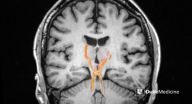(Press-News.org) A lot of problems, associated with the mixing of the liquid in the microchannels, could be solved via proper organization of the inhomogeneous slip on the walls of these channels. This is the conclusion made by the joint group of Russian and German scientists lead by Olga Vinogradova, who is a professor at the M.V. Lomonosov Moscow State University and also a head of laboratory at the A.N. Frumkin Institute of Physical chemistry and Electrochemistry of the Russian Academy of Sciences. The article describing their theory was published in the latest issue of the journal Physical Review E. It's impact factor is 2.3.
This work is related to the field of microfluidics, which is promising and rapidly developing interdisciplinary field of research, studying the fluid flow in the microchannels.
Microfluidics is especially demanded in chemistry and biomedical research, where there is a necessity to carry out chemical synthesis of small doses of substance or to perform separation of particles of the biomaterial.
'Microfluidics forms the basis of so-called Lab-on-a-Chip (LOC) devices, which are miniature devices allowing to perform multistage chemical processes, including chemical reactions, mixing, concentration and separation, on a chip the size of a small coin,' Olga Vinogradova says.
According to Vinogradova, such systems are promising not only as microreactors in synthetic chemistry, but also as portable analytical devices, e.g., for the diagnosis of cancer and infectious diseases.
Difficulties with mixing of liquids are one of the biggest problems the researchers working with the microchannels face.
The point is that the flow in such channels is laminar (i.e. layered). There is no convection on laminar flow, that is why the liquids mix very slowly, only by diffusion.
Physicists managed to find a sophisticated solution to the problem based on the use of superhydrophobic surfaces. Such surfaces are made from water repellent material. Moreover, they are microrough.
As a result, air microbubbles are retained in the recesses of a superhydrophobic surface texture. Such an 'air cushion' makes superhydrophobic surface very slippery.
In this paper, researchers have suggested to use superhydrophobic texture in the form of parallel grooves, inclined at a certain angle to the axis of the channel, wherein the upper wall the grooves are turned to the right and at the bottom they are turned to the left. Such grooves impart the walls of the channel with anisotropic characteristics as the liquid flows along them faster than transversely.
Moreover, it turned out that apart from the main channel flow there is a secondary shear fluid flow in the transverse direction to the axis of the channel. As a result, the fluid begins to roll slightly near the walls in the same way a bullet rotates moving along a rifled barrel of a rifle.
'If the fluid moves very slowly, then a very elongated transverse vortex forms in the channels,' says Tatiana Nizkaya, who is a co-author of the paper, working at the A.N. Frumkin Institute of Physical Chemistry and Electrochemistry. 'However, with an increase in liquid flow speed the liquid begins to 'sideslip' on turns.'
According to Evgeny Asmolov, who is a co-author of the paper, working at the A.N. Frumkin Institute of Physical chemistry and Electrochemistry and the Central Aerohydrodynamic Institute, this vortex is superimposed by the smaller ones, which are limited by the neighboring grooves. It means that the artificial turbulence is being formed in the flow.
'Such flows may be useful for mixing liquids or for the separation of particles of different sizes,' Evgeny Asmolov adds.
Russian scientists with their colleagues from the University of Mainz (Germany) carried out computer simulations of the predicted effect by the method of dissipative particle dynamics. They analyzed the trajectory of the model of fluid particles in a microchannel and studied the dependence of the shape and the number of vortices on the flow rate.
According to the simulation results, the authors concluded that there is critical speed at which the single large vortex is broken up into many small ones, what eventually leads to a new efficient mechanism of mixing liquids.
'Systems for efficient mixing in microchannels, based on the use of a special 'pattern' of the surface of the channel, already exist. For example, to spin liquid, specific obstacles at the bottom of the channel have a herringbone pattern. This time the vortex occurs due to the side walls,' says Tatiana Nizkaya. 'Our method is much easier as you simply take two superhydrophobic planes with stripes of gas and rotate them at an angle to each other.
Furthermore, the partition of the vortex into many smaller ones allows simultaneously mixing across the width of the channel.'
INFORMATION:
Scientists are beginning to unwrap the biology behind why some people are more prone to major depression and other psychiatric disorders than others when experiencing stressful life events. The researchers found that cellular activity in response to stress hormone receptor activation differs from individual to individual. The study, led by Janine Arloth, Ryan Bogdan, and Elisabeth Binder at the Max Planck Institute of Psychiatry in Germany, also shows that the genetic variations underlying this difference in stress response correlate with dysfunction in the amygdala, a ...
This news release is available in German. Scientists at the German Center for Neurodegenerative Diseases (DZNE) and the University of Bonn led by Prof. Stefan Remy report on this in the journal "Neuron". Their investigations give new insights into the workings of spatial memory. Furthermore, they could also help improve our understanding of movement related symptoms associated with Parkinson's disease.
In a familiar environment our movements are purposeful. For example, if we leave our office desk for a coffee break, we naturally follow a predefined route that has ...
This news release is available in German.
Contaminated samples have evidently created some confusion in the timetable of life. On the basis of ultra-clean analyses, an international team, including scientists from the Max Planck Institute for Biogeochemistry, has disproved supposed evidence that eukaryotes originated 2.5 to 2.8 billion years ago. In contrast to prokaryotes such as bacteria, eukaryotes have a nucleus. Some researchers thought they had discovered molecular remnants of living organisms in rock samples up to 2.8 billion years old. However, as the ...
A team of New York University neuroscientists has determined how a pair of growth factor molecules contributes to long-term memory formation, a finding that appears in the journal Neuron.
"These results give us a better understanding of memory's architecture and, specifically, how molecules act as a network in creating long-term memories," explains the paper's senior author, Thomas Carew, a professor in NYU's Center for Neural Science and dean of NYU's Faculty of Arts and Science. "More importantly, this marks another step toward elucidating the intricacies of memory ...
DURHAM, N.C. - Scientists at Duke Medicine have produced a 3-D map of the human brain stem at an unprecedented level of detail using MRI technology.
In a study to be published June 3 in Human Brain Mapping, the researchers unveil an ultra high-resolution brain stem model that could better guide brain surgeons treating conditions such as tremors and Parkinson's disease with deep brain stimulation (DBS).
The new 3-D model could eliminate risky trial-and-error as surgeons implant electrodes -- a change akin to trading an outdated paper road atlas for a real-time GPS.
"On ...
An international team of scientists led by Cardiff University researchers has provided the strongest evidence yet of what causes schizophrenia - a condition that affects around 1% of the global population.
Published today (17:00BST, 03/06/2015) in the journal Neuron, their work presents strong evidence that disruption of a delicate chemical balance in the brain is heavily implicated in the disorder.
In the largest ever study of its kind, the team found that disease-linked mutations disrupt specific sets of genes contributing to excitatory and inhibitory signalling, ...
A large majority of Americans--including gun owners--continue to support stronger policies to prevent gun violence than are present in current federal and most state law, according to a new national public opinion survey conducted by researchers with the Johns Hopkins Center for Gun Policy and Research at the Bloomberg School of Public Health.
The survey is a follow-up to one conducted by the same researchers in early 2013, shortly after the shooting at the Sandy Hook Elementary School in Newtown, Connecticut that left 26 dead.
The results are published online in Preventive ...
This news release is available in French. Professors Frederick Gosselin and Daniel Therriault, along with their master's student Renaud Passieux, are not related to Spiderman. Nevertheless, these Polytechnique Montreal researchers have produced an ultra-tough polymer fibre directly inspired by spider silk! They recently published an article about the project in the journal Advanced Materials.
Spider silk: a thread with stunning properties
Three to eight microns in diameter but five to ten times tougher than steel or Kevlar: despite its lightness, spider silk has ...
Love the opera? Hungry for hip hop? It turns out that your musical likes and dislikes may say more about you than you think, according to UBC research.
Even in 2015, social class continues to inform our cultural attitudes and the way we listen to music, according to the study, which was recently published in the Canadian Review of Sociology.
"Breadth of taste is not linked to class. But class filters into specific likes and dislikes," said Gerry Veenstra, study author and professor at UBC's Department of Sociology.
The study involved nearly 1,600 telephone interviews ...
A NASA-generated animation of NOAA's GOES-West satellite imagery from June 1 to 3 showed Hurricane Andres' eye disappear as the storm weakened into a tropical storm.
NOAA's GOES-West satellite has provided continuous visible and infrared imagery of the former hurricane since it was born. An animation created by the NASA/NOAA GOES Project at NASA's Goddard Space Flight Center in Greenbelt, Maryland captured the storm as it made the transition from a hurricane, back into a tropical storm. Andres is located in the Eastern Pacific Ocean, south of Baja California, Mexico. ...



